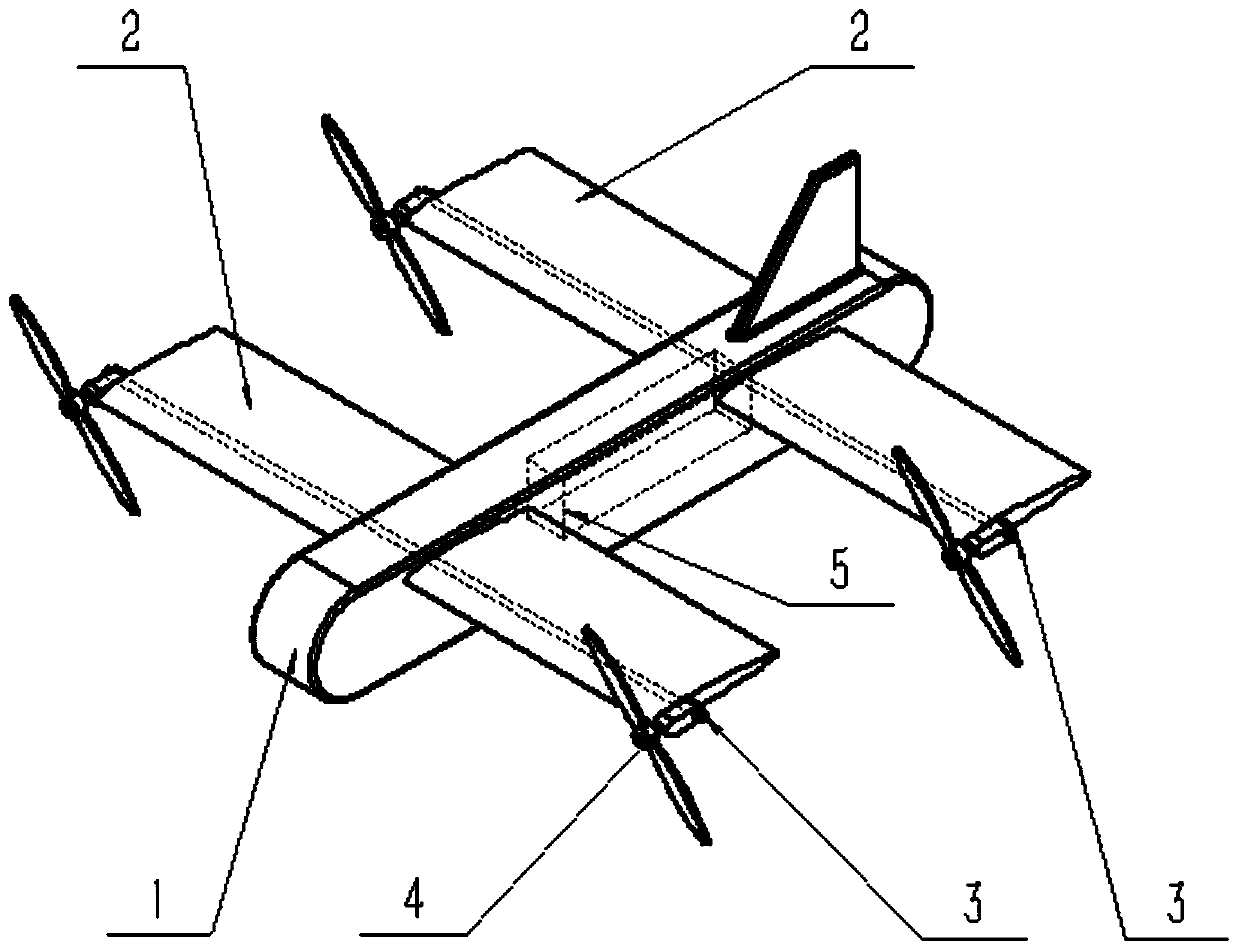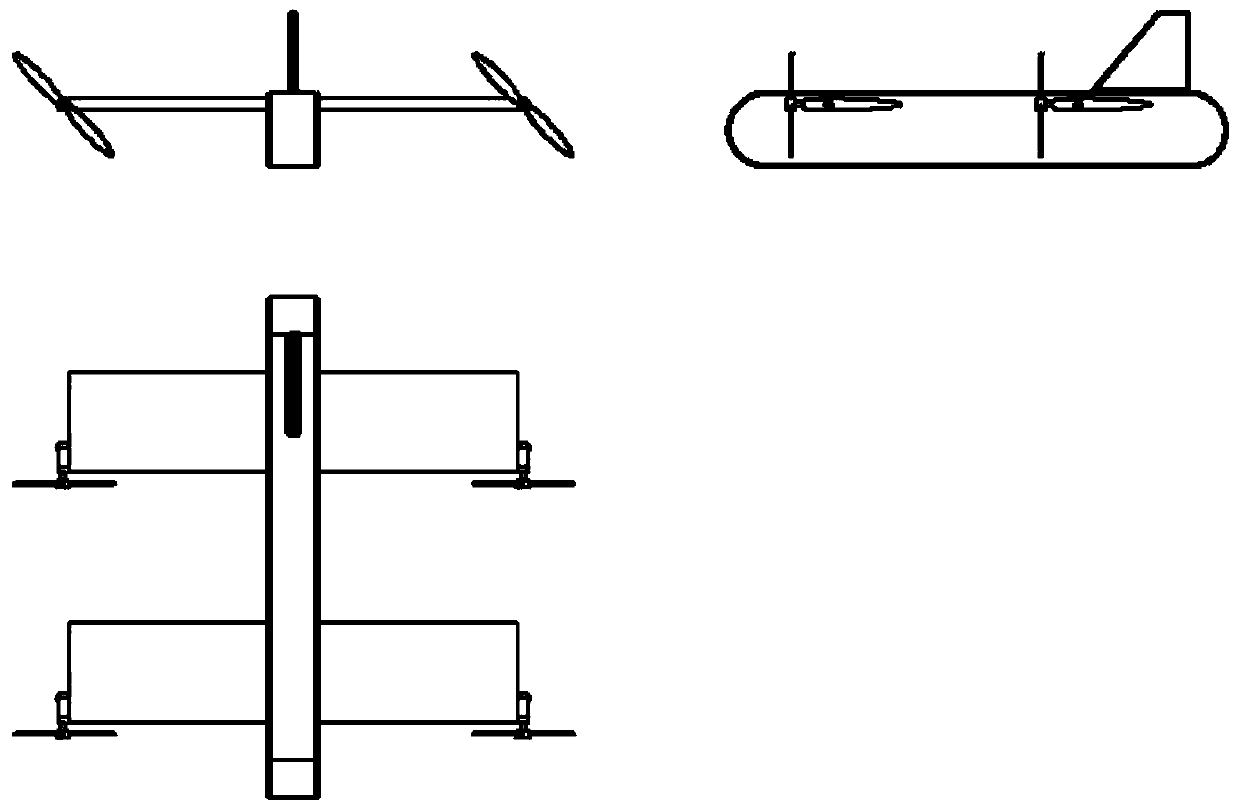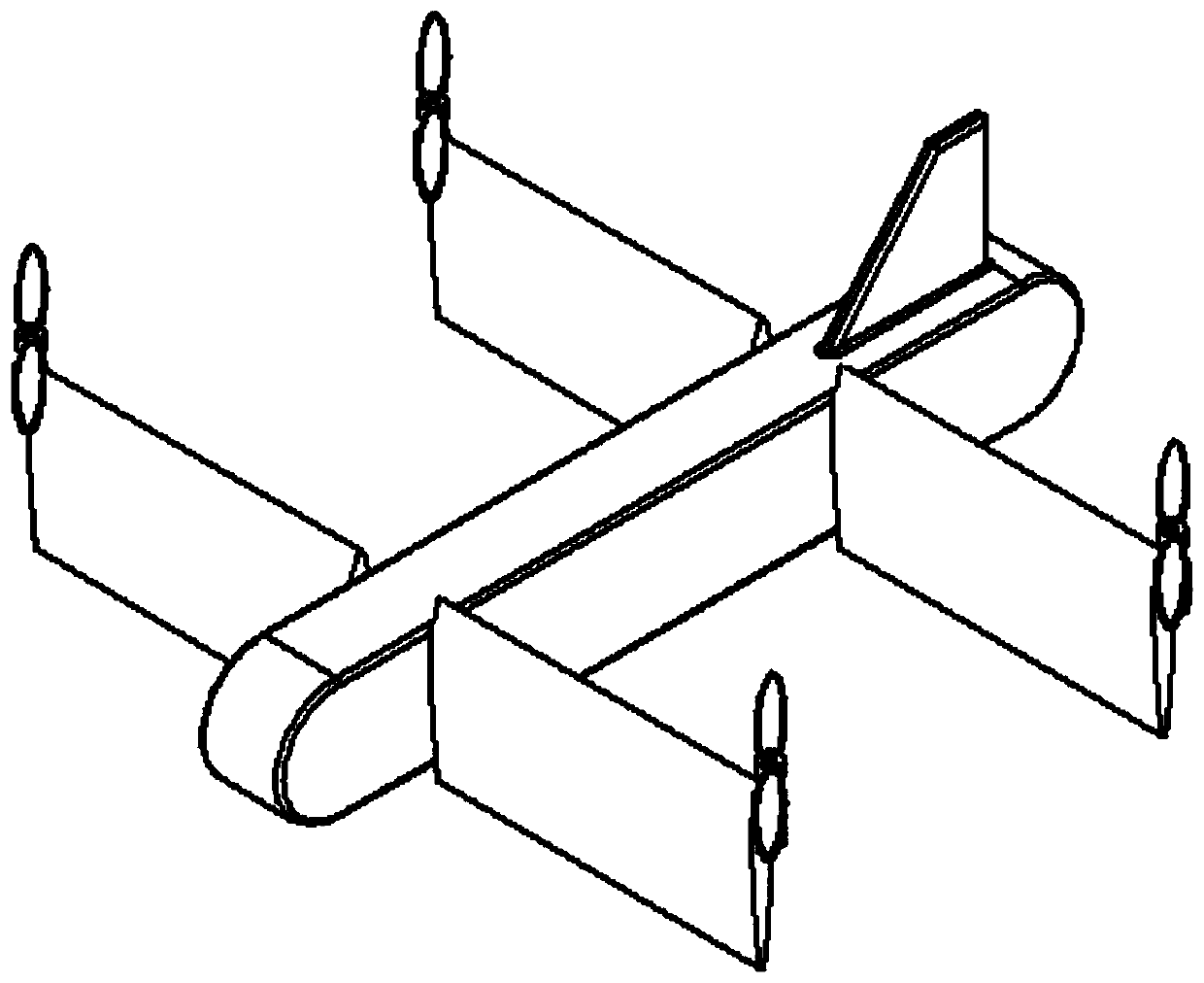Layout and control method of tilting rotor-wing vertical take-off and landing aircraft
A technology of vertical take-off and landing and tilt-rotor, applied in the aviation field, can solve problems such as insufficient lift and rudder effect, airflow interference between rotor and wing, complicated control, etc., so as to reduce airflow interference and control difficulty, reduce burden and Control difficulty and solve the complex effects of flight control
- Summary
- Abstract
- Description
- Claims
- Application Information
AI Technical Summary
Problems solved by technology
Method used
Image
Examples
Embodiment Construction
[0038] The present invention will be further described below in conjunction with the drawings. These drawings are simplified schematic diagrams, which merely illustrate the basic structure of the present invention in a schematic manner.
[0039] A tilt-rotor-wing vertical take-off and landing aircraft layout, such as figure 1 , figure 2 As shown, it includes: a fuselage 1, a wing 2, a rotating shaft 3, a rotor 4, and an electronic device 5.
[0040] The fuselage 1 is the main part of the airplane, used to bear the payload and connect the other parts of the airplane.
[0041] The wing 2 is divided into two groups, front and rear, which are connected to the fuselage 1 through two rotating shafts 3 arranged at the front and rear of the fuselage 1, and can rotate around the corresponding rotating shaft in the range of 0° to 90° for use in level flight mode To generate lift. An aerodynamic rudder surface is provided on the wing 2 to provide the control force of the aircraft in each mod...
PUM
 Login to View More
Login to View More Abstract
Description
Claims
Application Information
 Login to View More
Login to View More - R&D
- Intellectual Property
- Life Sciences
- Materials
- Tech Scout
- Unparalleled Data Quality
- Higher Quality Content
- 60% Fewer Hallucinations
Browse by: Latest US Patents, China's latest patents, Technical Efficacy Thesaurus, Application Domain, Technology Topic, Popular Technical Reports.
© 2025 PatSnap. All rights reserved.Legal|Privacy policy|Modern Slavery Act Transparency Statement|Sitemap|About US| Contact US: help@patsnap.com



